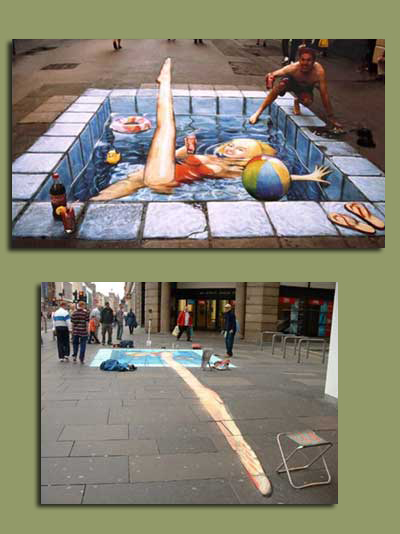
 |
 |
 |
 |
 |
 |
 |
|
|
There are two main types of anamorphosis: Perspective (oblique) and Mirror (catoptric). Examples of perspectival anamorphosis date to the early Renaissance (15th Century), whereas examples of mirror anamorphosis (or catoptric anamorphosis) occurred at the time of the baroque (17th century). In the sidewalk chalk paintings of Julian Beever, he uses the chalk painting, the pavement and the architectural surroundings all as part of an illusion. Art of this style can be produced by taking a photograph of an object or setting at a sharp angle, then putting a grid over the photo, another, elongated grid on the footpath based on a specific perspective, and reproducing exactly the contents of one into the other, one square at a time. |
 |
| Back to top |
| ©2009 Petree Web Design | 336-253-8781 |